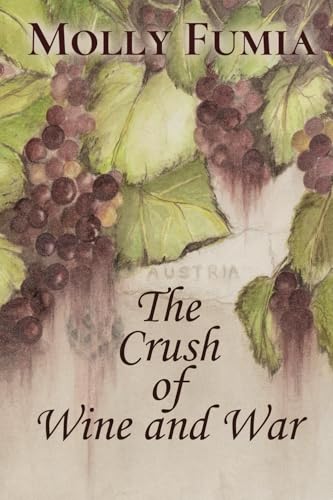The Crush of Wine and War
In 1989, people gather in St. Jakob, Austria, to celebrate the birthday of Sebastien Brandl, a recently recognized hero of WWII, a man who was instrumental in the rise of the resistance to Nazism in Austria. While many are interested in Sebastien’s story, his widow, Hannah, is reluctant to share reminiscences. What could she say, she wonders, without triggering deep feelings of regret?
The Crush of Wine and War takes readers into Hannah’s past and tells not only about her life with Sebastien, an innkeeper who kept secret his work as a Resistance operative even from his wife. The book also tells about Max Mayr, a local vintner who, as Nazi anti-Semitism spread through the country, hid Jewish families on his estate in Moosfeld.
The story is loosely based on author Fumia’s acquaintance with Franziska Jägerstätter, widow of Franz Jägerstätter, an Austrian peasant farmer beheaded in 1943 for refusing to be inducted into the army of the Third Reich. As the author notes in the foreword, she “borrowed only a few facts” from Franziska’s life.
The book is highly populated with characters, which can knock readers off the rhythm of the story. It is also is heavily laden with descriptions of ordinary life. While interesting to note how people lived day to day as Austria came under the rule of the Third Reich, actions taken by the Resistance operatives are often glossed over. The narrative tells more often than it shows, missing the opportunity to let readers walk in the operatives’ shoes, trying not to wince when a stranger catches their eye, or raise suspicion when they stuff leaflets and papers in a drawer and survive under the crush of war.










